Cattle breeding in Azerbaijan: a messy situation
Many Azerbaijanis are of the opinion that all dishes must contain meat. It’s not without reason that Azerbaijanis generally treat guests to kebab or, in case of emergencies, dolma. For that reason, cattle breeding has long been considered a traditional occupation. Even historically speaking, as nomads, Azerbaijanis’ predecessors were cattle breeders. Cattle breeding in Azerbaijan.
The local environment lends itself to cattle breeding as well, as more than 70 percent of the land is not suitable for agricultural purposes for various different reasons, be it that the land is mountainous, the soil not rich enough, composed of half-deserts or eroded land.
As a result, across the entire country only about 1.3 million hectares of land is useable – 85 percent of the country’s agricultural produce is grown there. For that reason, people think that the cattle growing business is in good shape. The Cabinet of Ministers talks about this, as do leaders of the country’s various districts. Supposedly, cattle breeding is also the most developed trade when concidering import substitution. But is it true?
Official data shows that over the first half of the current year, Azerbaijan imported 2.3 million animals: chickens, goats, cows and even insects. But in the country, the numbers for these animals has been reduced.
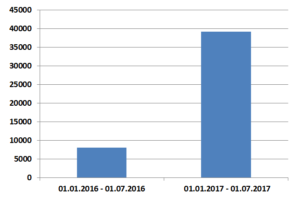
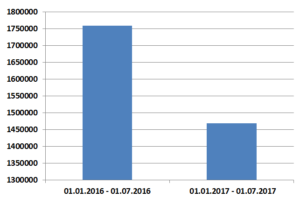
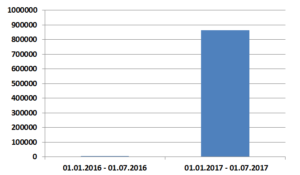
Society, however, payed particular attention to donkeys. After the publication of official data in 2016, it turned out that there were 2000 less donkeys in the country than the year before; journalists and social media users began writing stories on the topic of disappearing donkeys.
Then, the Ministry of Agriculture announced its concern over a decrease in the number of pigs. However, pig breeding was never an important part of local animal breeding, because of both tradition and other factors. In such a situation, the Ministry of Agriculture should be concerned about the situation around animal breeding as a whole, not pigs and donkeys.
Sheep breeding, also a traditional sphere of cattle breeding in agricultural districts, is also going through a crisis. For the first time, sheep livestock has decreased. Earlier, the number of sheep grew by about 15 – 70 thousand per year. But in 2016, the number of sheep decreased by 62.2 thousand.
This was evidently a large decrease, as in 2016 Azerbaijan imported 2.5 times as many sheep – as many as 60 thousand. That is to say that there is evidence to suppose that the decrease of sheep last year may have reached 100 thousand. However, despite the fact that pig numbers steadily fell throughout the post-Soviet period, numbers for horned cattle, horses and sheep have steadily grown. However, this was not the case in 2016, during which time we witnessed a decrease in horned cattle by about 10 000; in sheep by about 62 000 and horses by about 2 000. Those are the main areas of cattle breeding in the country.
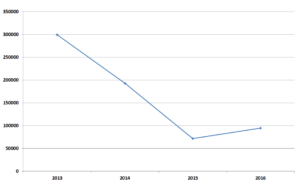
Let’s look at an example from a specific region. The region that suffered the largest decrease in cattle was Gedabek district, where horned cattle and sheep lifestock suffered a reduction of 10%. Over that period, grain crops expanded by an additional 500 hectares and the production of barley grew 5 times.
It was in such conditions that the government began a campaign to raise the production rates of cotton, tobacco, tea, sugar, beet and several other products. Landowners were given benefits in the hopes of raising production and to replace imports. Grain crops and beans expanded by 43 000 hectares, and in the process took up land that otherwise would have been used for producing cattle feed which is already produced in small quantities. Moreover, the land is used irrationally, and not allowed to ‘rest’ which in turn provides for low fertility.

The question came up on how to increase the production of crops such as tea, tobacco and cotton without harming the potato and grain industries. It would seem that a program spanning many years is needed to restore fertility on ruined lands and to clean polluted lands: in the Absheron peninsula alone there are 21 000 hectares of land which have been sullied by oil. Unfortunately, the government has woken up only now, and they need quick results, despite the fact that agriculture is not a sphere in which one can receive results quickly.
All of this has led to a fall in harvest productivity of items such as tea, tobacco and cotton, which fell from 1.8 – 2 tonnes per hectare to 1.4 – 1.6. This was in parallel to a fall in the production and harvest productivity of potatoes and wheat.
But the most unpleasant fact is the reassignment of pastures to plantation lands – which significantly harmed cattle production – which in turn lead to the gradual decrease in donkeys, pigs and sheep.
Continuing along the chain, import substitution also took a hit. In 2016, 523.7 thousand tonnes of meat was produced, while only 31 000 tonnes were imported. And while a 5 – 6% percent dependence on import isn’t in itself bad, the rate of growth is frightening.
The import of poultry meat in 2016 was 3.3 times higher than what it was in 2015. According to the results from the first half of 2017, the import of meat has grown two-fold. In 2016, only 3% of cattle meat was imported, while in the first half of 2017 it is already 100%.
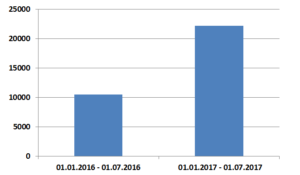

There are even problems in the traditional sphere of egg production. Practically all chickens in Azerbaijan came from imported eggs. In 2016, as a result of certain measures, import decreased by almost half – 47.5 to 28.6 million. But in 2017, in the first half of the year, 26.6 million eggs have already been imported.
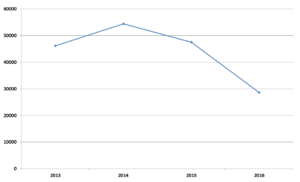
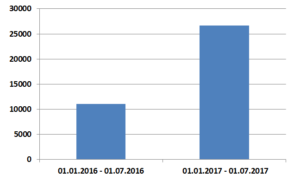
It is namely these problems that should concern society and the Ministry of Agriculture. As long as land is incorrectly divided between agricultural industries, we will turn into a country with cotton, but with imported meat. This is strange because in recent years the authorities have been proud of how independent Azerbaijan is regarding imports. But according to the results of 2017, one may assume that dependence on meat imports will reach 10-12%, and this is a significant number. It won’t work to slap large import tariffs on them either, as was tried with chickens and eggs.


















